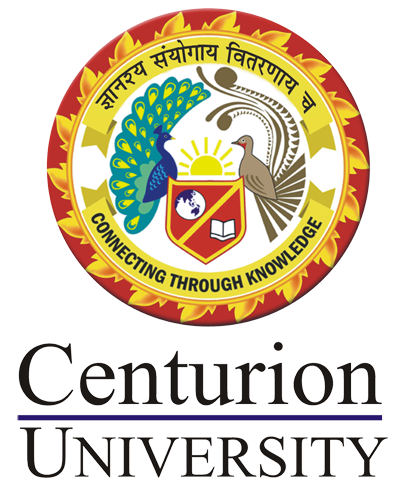Statistical Mechanics
Course Attendees
Still no participant
Course Reviews
Still no reviews
Course Name : Statistical Mechanics
Code(Credit) : CUTM1496(3-2-1)
Course Objectives
- To relate the microscopic properties of individual atoms and molecules to the macroscopic or bulk properties of materials.
- To explore the different types of distribution functions in order to explain the behaviour of the particles.
- To study of quantum theory of radiation and explain black body radiations with help of the various theories and models.
- To explain the thermodynamic behaviour of the atoms and molecules
Learning Outcomes
Upon successful completion of this course, students will be able to:
- understand the basic properties of thermodynamics and statistical mechanics.
- understand the black-body radiation and distribution functions.
- distinguish between classical and quantum radiation
Course Syllabus
Module I
Classical Statistics-1: Macrostate & microstate, Elementary concept of ensemble, Phase space, Entropy and thermodynamic probability, Maxwell-Boltzmann distribution law, Partition function, Thermodynamic functions of an ideal gas.
Practice-1
Plot Maxwell-Boltzmann distribution functions with energy at different temperatures. (Using Scilab / Python)
Practice-2
Computation of the partition function Z(β) of systems with a finite number of single particle levels (e.g., 2 level, 3 level, etc.) and a finite number of non-interacting particles N under Maxwell-Boltzmann statistics : Study of how Z(β), average energy <E>, energy fluctuation ΔE and specific heat at constant volume Cv depend upon the temperature and total number of particles N
Module II
Classical Statistics-2: Classical entropy expression, Gibbs paradox, Sackur Tetrode equation, Law of equipartition of energy (with proof) – applications to specific heat and its limitations.
Practice-3
Plot specific heat of solids according to Dulong-Petit law for high temperature and low temperature and compare them for these two cases.
Practice-4
Plot specific heat of solids according to Einstein distribution function for high temperature and low temperature and compare
Practice-5
Plot specific heat of solids according to Debye distribution function for high temperature and low temperature and compare them for these two cases.
Module III
Classical Theory of Radiation-1: Properties of thermal radiation, Black body radiation, Pure temperature dependence, Kirchhoff’s law, Stefan-Boltzmann law: thermodynamic proof.
Module IV
Classical Theory of Radiation-2: Radiation pressure, Wien’s displacement law, Wien’s distribution law, Saha’s ionisation formula, Rayleigh-Jean’s law, Ultraviolet catastrophe.
Practice-6
Plot Wien’s distribution Law
Practice-7
Plot Rayleigh-Jeans Law
Module V
Quantum Theory of Radiation: Spectral distribution of black body radiation, Planck’s quantum postulates, Planck’s law of black body radiation: experimental verification, Deduction of (1) Wien’s distribution law, (2) Rayleigh-Jeans law, (3) Stefan-Boltzmann law, (4) Wien’s displacement law from Planck’s law.
Practice-8
Plot Planck’s law for black body radiation and compare it with Raleigh-Jeans law at high temperature and low temperature
Module VI
Bose-Einstein Statistics: B-E distribution law, Thermodynamic functions of a strongly degenerate Bose gas, Bose Einstein condensation, properties of liquid He (qualitative description), Radiation as a photon gas and thermodynamic functions of photon gas.
Practice-9
Plot Bose-Einstein distribution functions with energy at different temperatures
Practice-10
Computation of the partition function Z(β) of systems with a finite number of single particle levels (e.g., 2 level, 3 level, etc.) and a finite number of non-interacting particles N under Bose-Einstein statistics : Study of how Z(β), average energy <E>, energy fluctuation ΔE and specific heat at constant volume Cv depend upon the temperature and total number of particles N
Module VII
Fermi-Dirac Statistics: Fermi-Dirac distribution law, Thermodynamic functions of a completely and strongly degenerate fermi gas, Fermi energy, Electron gas in a metal.
Practice-11
Plot Fermi-Dirac distribution functions with energy at different temperatures
Practice-12
Computation of the partition function Z(β) of systems with a finite number of single particle levels (e.g., 2 level, 3 level, etc.) and a finite number of non-interacting particles N under Fermi-Dirac statistics : Study of how Z(β), average energy <E>, energy fluctuation ΔE and specific heat at constant volume Cv depend upon the temperature and total number of particles N .
Text Book:
Statistical Mechanics by R.K. Pathria, Butterworth Heinemann: 2nd Ed., 1996, Oxford University Press.
Reference Books:
- Statistical Physics, Berkeley Physics Course, F. Reif, 2008, Tata McGraw-Hill
- Statistical and Thermal Physics, S. Lokanathan and R.S. Gambhir. 1991, Prentice Hall
- Thermodynamics, Kinetic Theory and Statistical Thermodynamics, Francis W. Sears and Gerhard L. Salinger, 1986, Narosa.
- Modern Thermodynamics with Statistical Mechanics, Carl S. Helrich, 2009, Springer
- An Introduction to Statistical Mechanics & Thermodynamics, R.H. Swendsen, 2012, Oxford Univ. Press
Session 3
Phase space, Entropy and thermodynamic probability.
Session 6
Session 7
Practice-1 (2 hours)
Plot Maxwell-Boltzmann distribution functions with energy at different temperatures. (Using Scilab or Python)
.
Session 8
Practice-2 (2 hours)
Under Maxwell-Boltzmann statistics, study of how Z(β), average energy <E>, energy fluctuation ΔE and specific heat at constant volume Cv depend upon the temperature and total number of particles N (Using Scilab / Python).
Session 12
Law of equipartition of energy (with proof) .
Session 13
Applications of equipartition of energy to specific heat and its Limitations .
Session 14
Flip class-2
Application of law of equipartition energy in specific heat of a gas. Meyer's relation.
Session 15
Practice-3 (2 hours)
Plot specific heat of solids according to Dulong-Petit law for high temperature and low temperature and compare them for these two cases. (Using Scilab / Python)
Session 16
Practice-4 (2 hours)
Plot specific heat of solids according to Einstein distribution function for high temperature and low temperature and compare. (Using Scilab / Python)
Session 17
Practice-5 (2 hours)
Plot specific heat of solids according to Debye distribution function for high temperature and low temperature and compare them for these two cases. (Using Scilab / Python)
Session 19
Black body radiation. Pure temperature dependence
Session 20
Session 23
Flip class-4
Stefan Boltzmann law practical application .
Session 25
Flip class-5
Effects of solar radiation pressure on satellite orbits
Session 26
Wien’s displacement law, Wien’s distribution law
Session 27
Session 30
Practice-6 (2 hours)
Plot Wien’s distribution law. (Using Scilab / Python)
.
Session 31
Practice-7 (2 hours)
Plot Rayleigh-Jeans law. (Using Scilab / Python).
Session 32
Spectral distribution of black body radiation.
Session 34
Flip class -7
Planck’s Law of black body radiation-experimental verification.
Session 35
Deduction of Wien’s distribution law from Planck’s law.
Session 36
Deduction of Rayleigh-Jeans Law from Planck’s law
Session 37
Flip class-8
Deduction of Stefan-Boltzmann law and Wien’s Displacement law from Planck’s law.
Session 38
Practice-8 (2 hours)
Plot Planck’s law for Black Body radiation and compare it with Raleigh-Jeans Law at high temperature and low temperature. (Using Scilab / Python).
Session 40
Thermodynamic functions of a strongly degenerate Bose gas.
.
Session 43
Flip class-9 (2 hours)
Radiation as a photon gas, Thermodynamic functions of photon gas.
Session 44
Practice-9 (2 hours)
Plot Bose-Einstein distribution functions with energy at different temperatures. (Using Scilab / Python)
.
Session 45
Practice-10 (2 hours)
Under Bose-Einstein statistics : Study of how Z(β), average energy <E>, energy fluctuation ΔE, specific heat at constant volume Cv, depend upon the temperature and total number of particles N. (Using Scilab / Python).
Session 47
Thermodynamic functions of a completely and strongly Degenerate Fermi Gas
Session 48
Session 50
Flip class-10 (2 hours)
Application of Fermi-Dirac distribution to semiconductors, difference between Maxwell Boltzman , Bose Einstein and Fermi Dirac statistics and their uses
https://www.youtube.com/watch?v=jKQCRf3EZRc
https://ecee.colorado.edu/~bart/book/book/chapter2/ch2_5.htm#top
Session 51
Practice-11 (2 hours)
Plot Fermi-Dirac distribution functions with energy at different temperatures. (Using Scilab / Python)
.
Session 52
Practice-12 (2 hours)
Under Fermi-Dirac statistics : Study of how Z(β), average energy <E>, energy fluctuation ΔE and specific heat at constant volume Cv depend upon the temperature and total number of particles N. (Using Scilab / Python).
Our Main Teachers

Dr. Nibedita Nayak is working as an Assistant Professor in the Department of Physics, School of Applied Sciences, Bhubaneswar Campus of Centurion University of Technology and Management, Odisha. She completed her Ph.D from Berhampur University in 2018. She is working on computational tools and new material development. She has more than six years of […]

Dr. Subrata Sarangi has a Masters’ Degree in Physics from IIT, Kanpur and a Ph.D in Nuclear Structure Theory from Physical Research Laboratory, Ahmedabad. He has 25 years’ experience in teaching at UG, PG and PhD levels. He has published over 20 peer reviewed research articles in areas of Atomic Nuclei, Nuclear Matter, Materials Sciences […]


Recent Comments